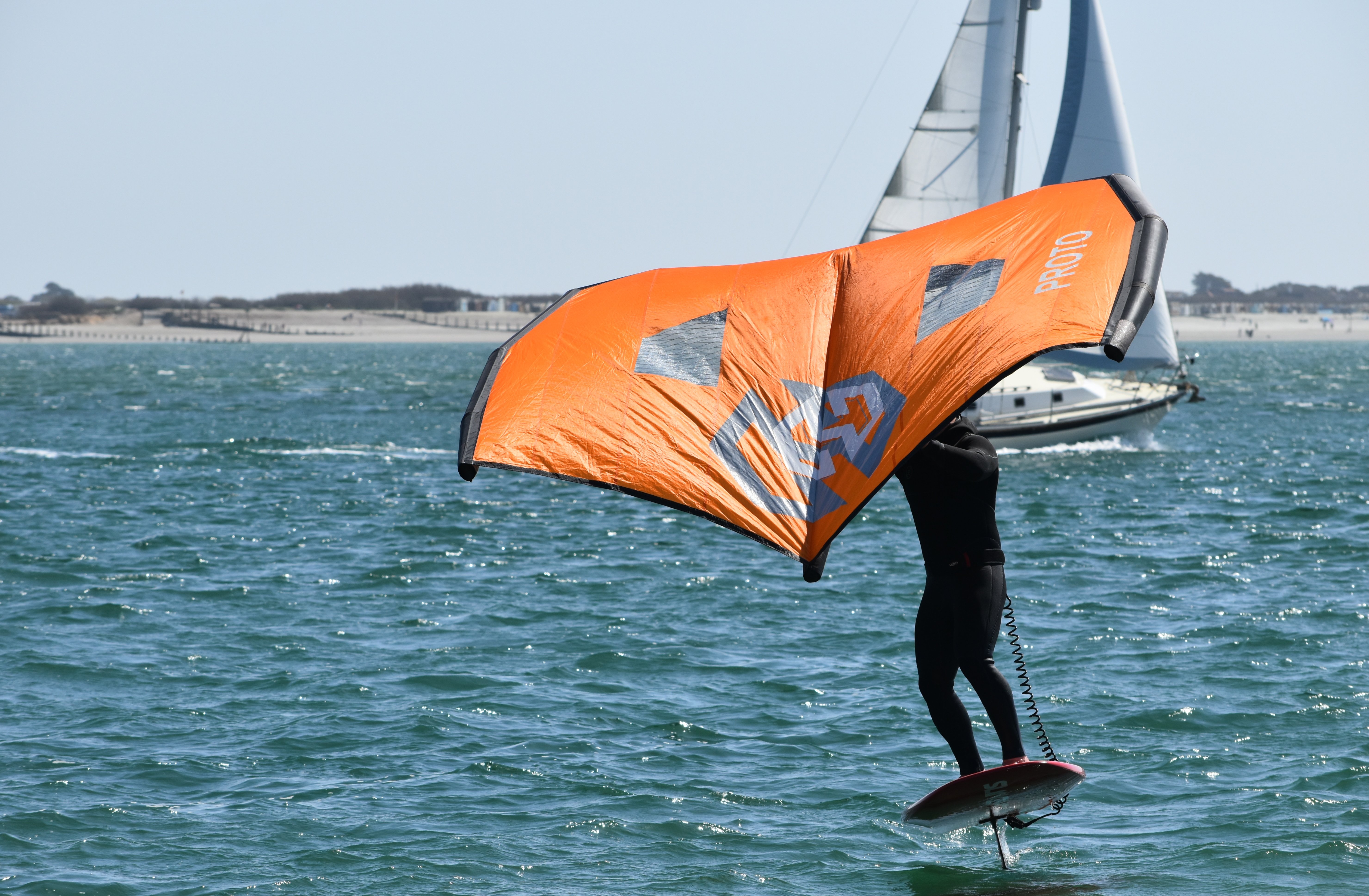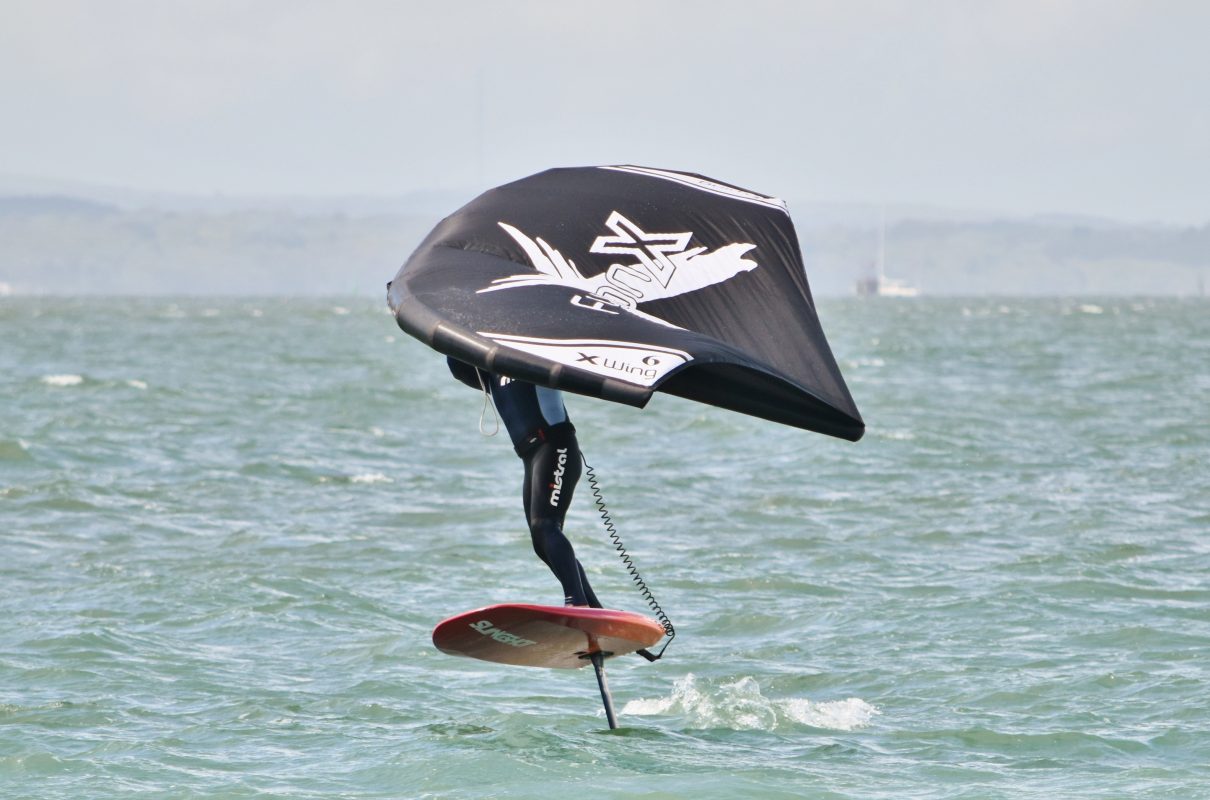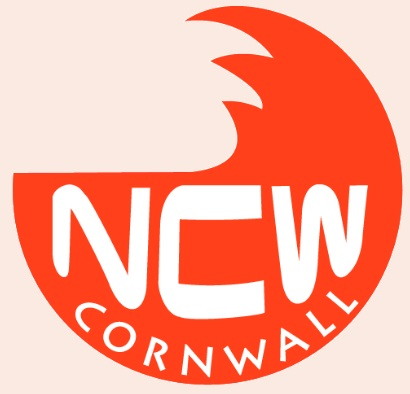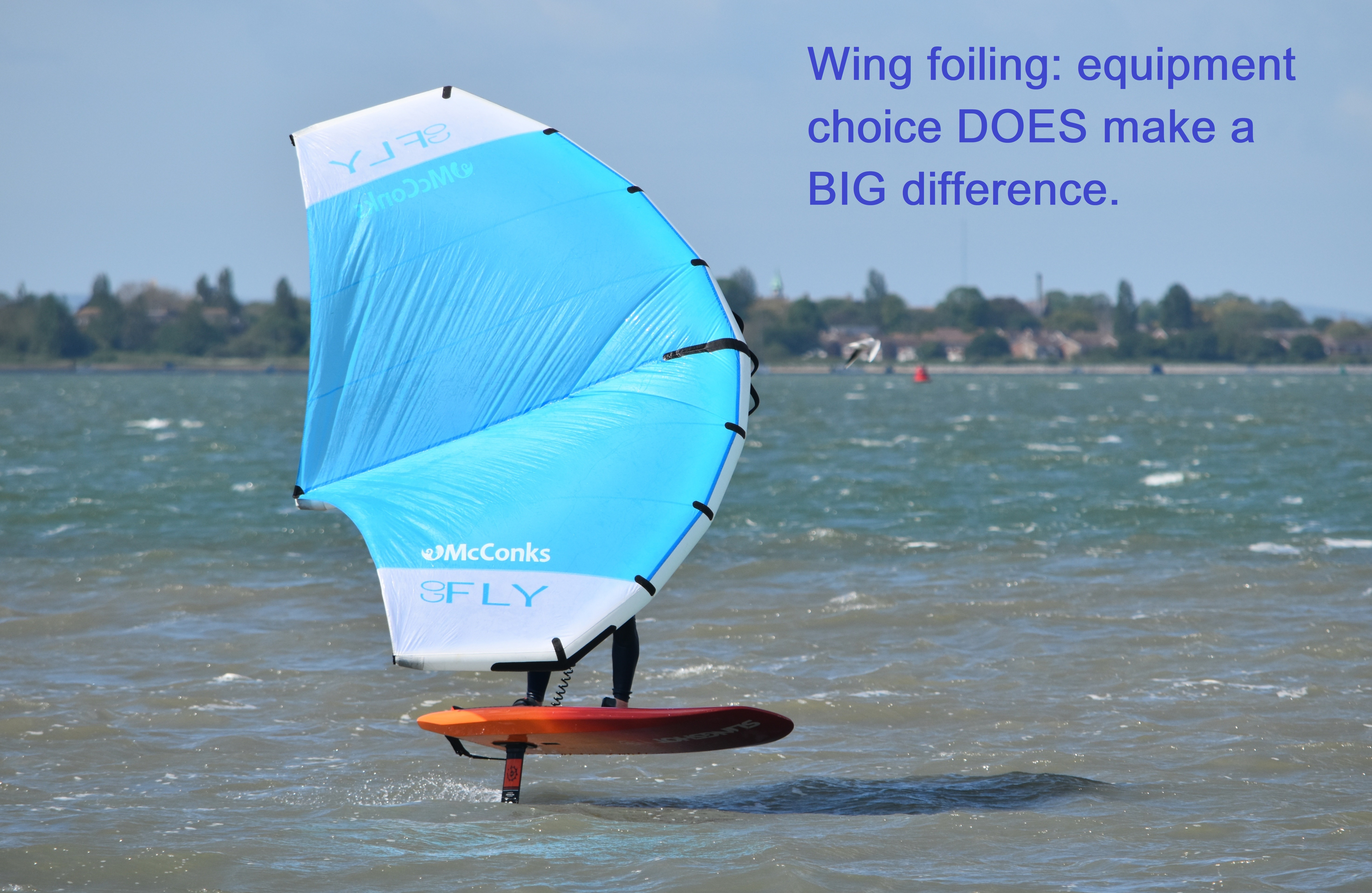Pics: Oli Lane-Peirce.
Adding to our already chunky Beginner Guide to Wing Foiling we’re talking specifics about the kit needed to wingsurf with this post. Some may see wingin’ as cool whilst others may consider it to be kooky (initially). After those first foiling flights, however, there’s no question about the addition ad thirst for more – regardless of initial perceptions. But. and it’s a big one. Your gear will make all the difference!

There are a few spots around the UK that offer perfect wing foil learning conditions. Portland Harbour, Weymouth, is one. Offering flat water (in Wly winds) Chessil Beach’s massive shingle bank blocks most of the chop and allows riders to sail almost within touching distance of land. This makes a huge difference to getting up on foil and flying efficiently. Chop is a killer when learning to wing. It can be a little like riding uphill. Add to the mix often lighter wind than you’d have for windsurfing or kitesurfing and an inflatable power source (the wing) that isn’t nearly as efficient as a rig and newbie wingers often get a rude awakening when they hit their more real world local.
Wings themselves have a come a long way in the last few years with designs offering optimised performance for various types of wing foil riding (waves, freestyle, freeride and race). The differences between wing feels – or more specifically the wing’s power delivery – is tangible. Some wings now offer a pretty hench bottom end grunt to get you flying on foil as early as possible. Other shapes are softer and require a more deft touch as far as technique goes. Then there’s the foil itself and how that can make or break your flying experience. Unlike windfoiling (windsurf) for instance, where riders rely more on the sail to propel forwards and rise up, winging sailors will need to work (or pump) the foil more. Having a product that aids this process and gives lots of early lift is therefore a good idea.
Boards also play their part with the overall shape and funny looking chines and cutouts helping with release, and later, touch downs if you drop from height. How connected you feel to the foil also comes down to the board – even larger, floaty higher volume sleds. This dispels the myth that once foiling you could almost be riding anything. That isn’t quite true as your whole set up needs to be as harmonious and working in tandem as possible to enjoy the best experience.

Wings, foils and boards come in so many shapes, sizes and styles it’s hard to know what you should be choosing, which we appreciate. Through our sister site – foilshop.co.uk – we’ve tested and demoed most styles of wing foiling wings, foils and boards to know what’s what. We appreciate many of you interested in winging might not have done. So it’s imperative you talk to someone with knowledge and hands on experience.
There’s no doubt wing foiling (or wingsurfing as it’s also known) will continue to grab attention. It’s also guaranteed that product development will continue at a terrific rate of knots. Which makes it both exciting and potentially even more confusing for the newbie. But, as we said at the site (with the title of this article) wing foiling kit DOES make a BIG difference so getting it right is key. If you have any questions about wing foiling gear then get in touch with us here at NCW or Foilshop UK. we’re only too happy to help.
You can find more wing foil and general foiling knowledge here –

